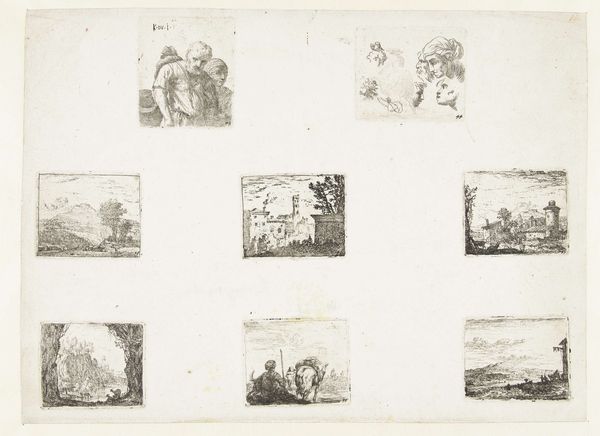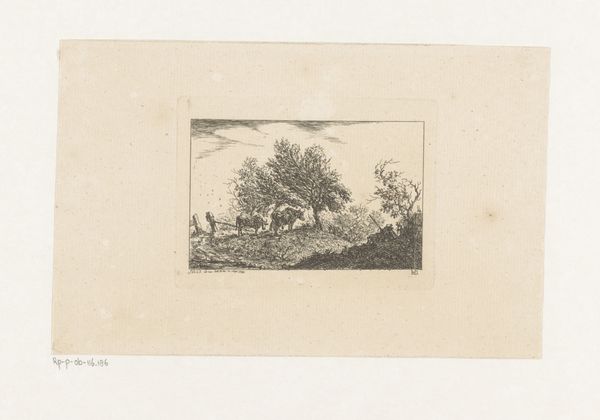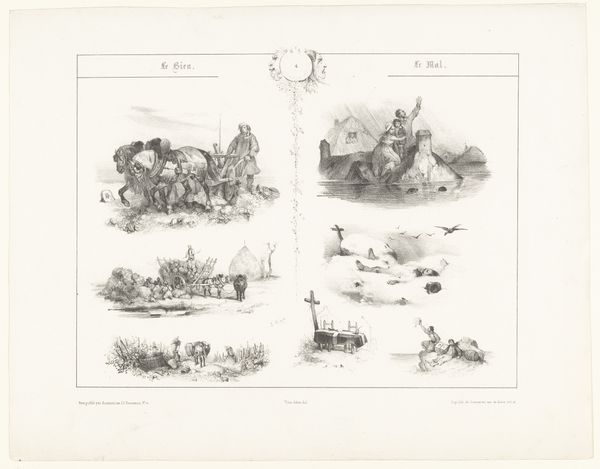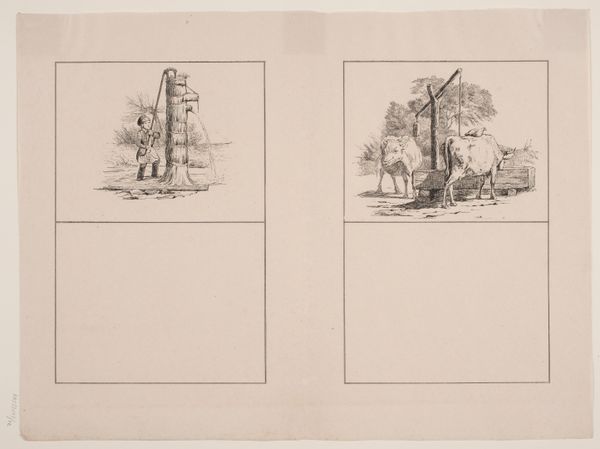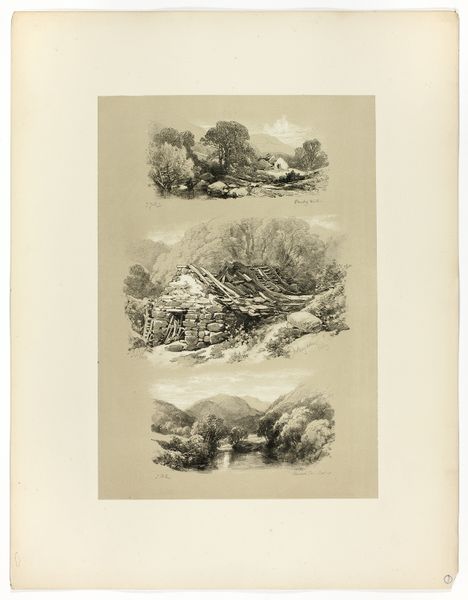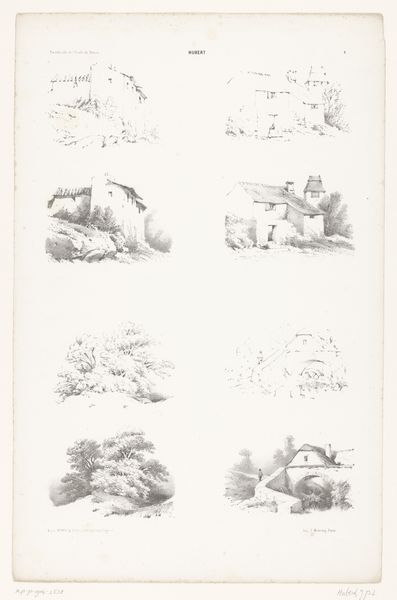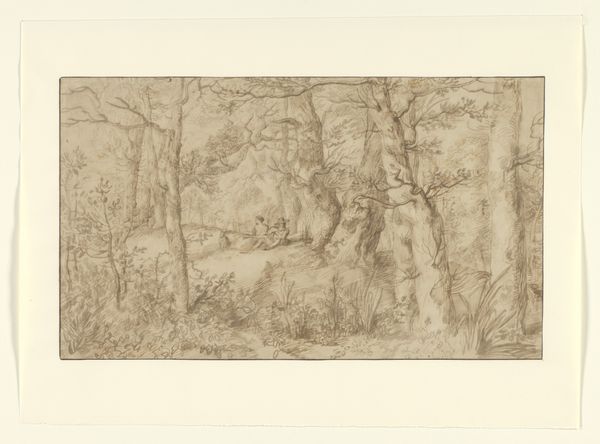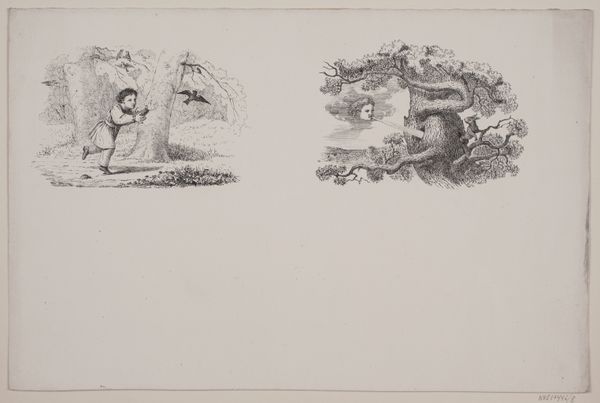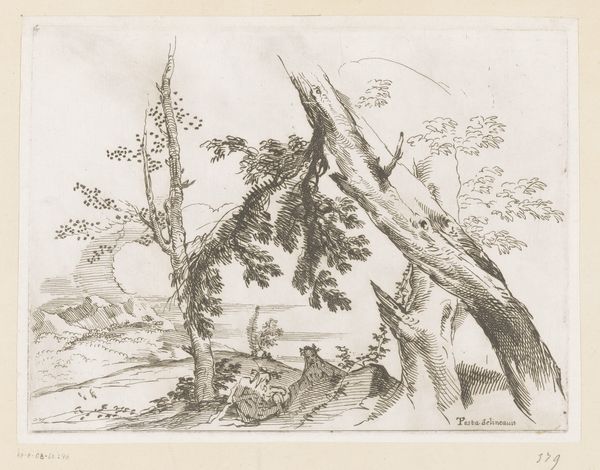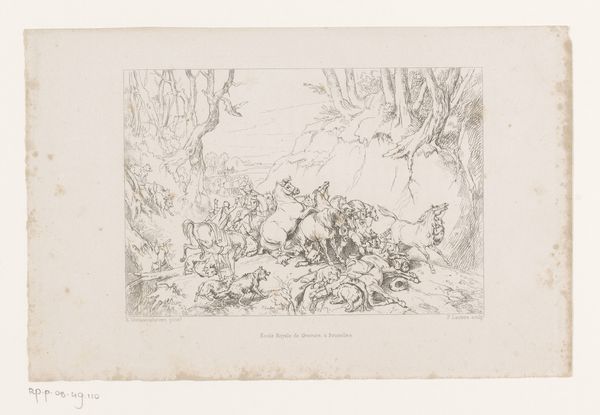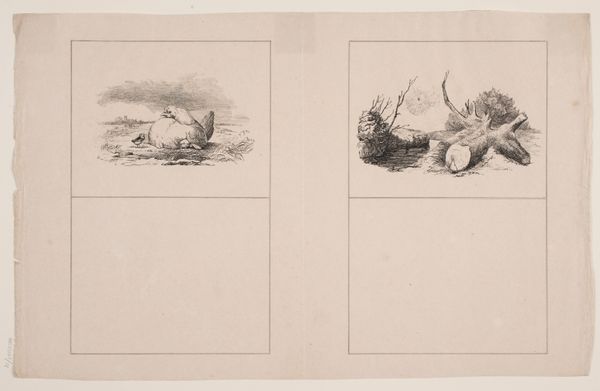
Acht voorstellingen van landschapselementen in twee tekenstappen 1853 - 1854
0:00
0:00
jeanbaptistelouishubert
Rijksmuseum
drawing, pencil, graphite
#
drawing
#
light pencil work
#
pencil sketch
#
old engraving style
#
landscape
#
personal sketchbook
#
pencil
#
graphite
#
sketchbook drawing
#
pencil work
#
sketchbook art
Dimensions: height 319 mm, width 489 mm
Copyright: Rijks Museum: Open Domain
Curator: This intriguing sheet of studies is entitled "Eight Representations of Landscape Elements in Two Drawing Steps," created between 1853 and 1854 by Jean Baptiste Louis Hubert. What strikes you about it? Editor: My first thought is the sense of methodical observation. Each of these small vignettes seems like a study in reduction, in capturing essence. It feels very… measured. Curator: Absolutely. What's fascinating is how Hubert has broken down these landscape elements – rocks, trees, buildings – into their core components, showcasing the steps in their creation using pencil and graphite. You see how the production of art itself, its materiality, is laid bare. He’s illuminating the labor. Editor: That act of simplification, of revealing the foundational structure, is also a kind of democratizing gesture. These are humble scenes of the countryside rendered in a readily accessible medium. There is nothing idealized here. What do you think that reflects about mid-19th-century perspectives on landscape and rural life? Curator: It challenges the romanticism that often cloaked landscape painting. Hubert offers a pragmatic view. His work reflects the shift from portraying idealized nature to engaging with everyday environments. Look closely and consider how this intersects with contemporaneous social movements like agrarian reform and increasing interest in rural economies. Editor: The unpretentious medium contributes to that feeling as well. The graphite and pencil speak of accessibility, and this emphasis allows us to ask about the labor of representation itself. What are the implications, say, of choosing readily available, easily portable materials? Curator: Good point. It shifts focus away from luxury and grandiosity to immediate access and the democratization of artistic practices, making the act of creation itself visible and accessible to all, further demystifying landscape painting for those that previously wouldn't see themselves represented in this type of work. Editor: So it becomes less about aesthetic beauty, though there's a simple charm here, and more about recording and understanding our surroundings? An accessible means of observation in a time of profound social change. Curator: Precisely. Hubert shows how landscapes are constructs and representations. It reveals the materiality of the art. It’s an educational study in observation and construction rather than simple imitation. Editor: A fascinating blend of technical exercise and a deeper meditation on how we see and engage with our world. Curator: Agreed, the simplicity masks profound insight.
Comments
No comments
Be the first to comment and join the conversation on the ultimate creative platform.
